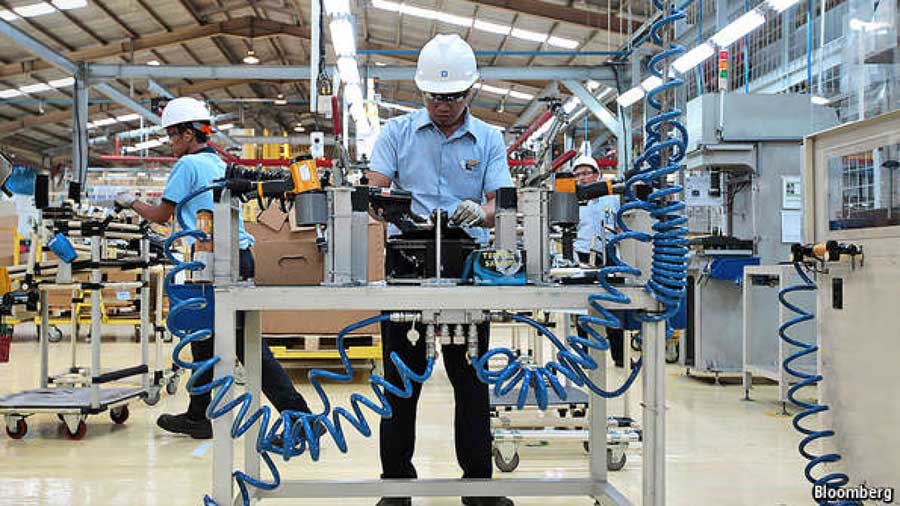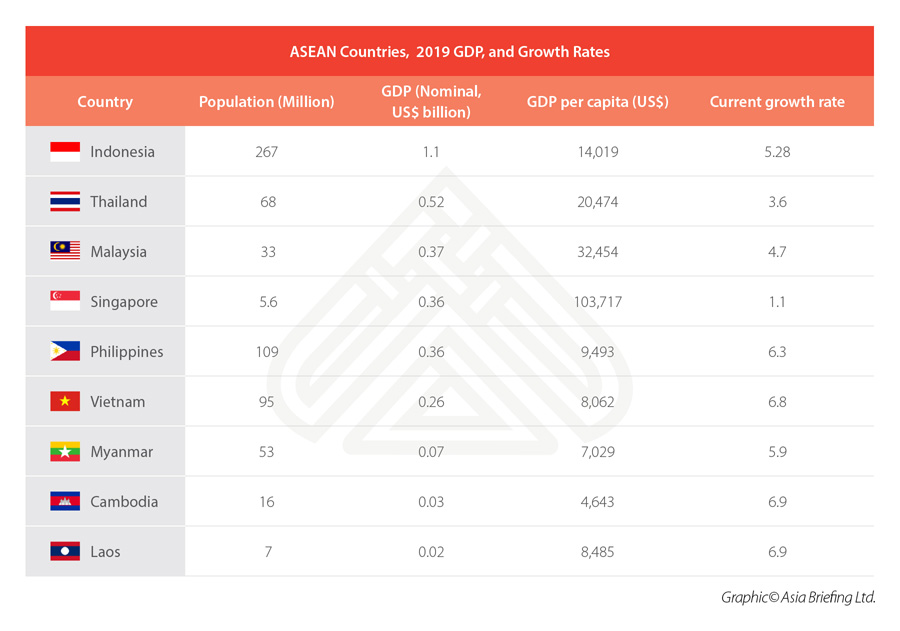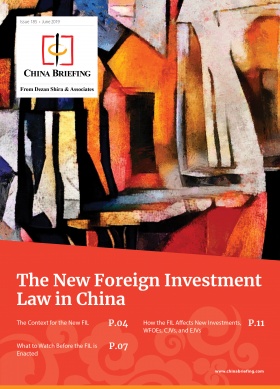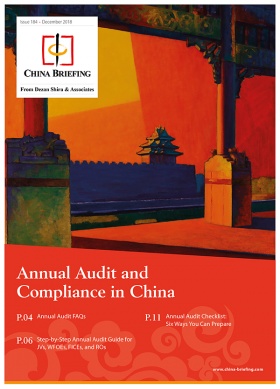Productivity Issues When Re-Positioning Your China Business for Southeast Asian Manufacturing
Southeast Asia is far more advanced than many foreign investors realize.

Op-Ed by Chris Devonshire-Ellis
Back in 1990, I was employed by Asia Law & Practice in Hong Kong. The business was one of the first to translate and publish China’s newly promulgated foreign investment law, which I had a hand in. Books such as “Life and Death of a Joint Venture in Shanghai“, which ran to several reprints, and the continuing magazine “China Law and Practice” were among some of the earliest English language publications dealing with China legal developments at that time.
I had first visited Hong Kong back in 1969, when as a boy I flew in to visit my Father and Uncle George, who were stationed there at the time. My Father was an engineer with the BBC, and my Uncle headed up what was then Swiss Bank. Subsequently, and a little older, I first visited mainland China – Shanghai, in 1988 – where I came across a sleeping giant, and vowed at the time that one day I would have an office there. That came true just six years later, when in 1994, Dezan Shira & Associates first established a Representative Office in the city. Two years prior to that, however, I had established the practice as a limited company in Hong Kong, with an office serving foreign investment in China in Shekou, near Shenzhen. (Interested readers may download the complimentary book “The Story Of A China Practice“, which outlines the history of the firm at that time). But to start up the firm, I had to resign from Asia Law & Practice. I never forgot what my then boss told me: “Chris, don’t go to China. Stay here in Hong Kong. China is dirty, communist, nothing works, and they’ll rip you off.”
All of which was true, although none of it was terminal in terms of operating a business there.
I am reminded of this anecdote because of the current trend among foreign investors, especially American ones, who are considering leaving China, or at the very least, diverting part of their operations from China to Southeast Asia. One of the issues is concern over productivity in China (generally good) versus productivity in other Asian countries (often regarded as not so good). To quote the well-meaning, but often inaccurate China Law Blog, “The level of performance in these new territories is more like China was in the 1990s and not at the level China has achieved.” But is this true?
Basically, it is not. We know this because back in 2007, we established offices in Vietnam and India. I recall at the time some of our competitors thought we were mad, stating that Vietnamese productivity would never match that of China, and that no-one was going to invest in India as it was “dirty, nothing worked, and they’d rip me off” (Sound familiar?). In fact, concerning the recent trend of foreign and US investment going into Vietnam, we published the first issue of our Vietnam Briefing in April 2008. It was titled “Global Manufacturing Moving to Vietnam“.
That is advice from eleven years ago, and today we have twelve years of foreign direct investment experience into Vietnam under our belts. We have offices in Hanoi, Ho Chi Minh City, and Da Nang. Why Da Nang? Because essentially the free trade and similar zones in Ho Chi Minh City are full, and Da Nang has just opened up facilities there. But to know that, you need to be present on the ground – as we are. These offices all service American and other foreign investment into the country. We help them do their planning, set up their businesses, and keep them in compliance. We know what the landscape in Vietnam looks like and what the Vietnamese are capable of doing in terms of productivity.
Concerning India, we established offices in Mumbai and Delhi in 2006, and published the first issues of India Briefing in 2007. One of those was titled “Setting Up Foreign Enterprises In India” and we have been advising foreign investors into the country for twelve years now.
Today, our Country Manager there, Rohit Kapur, presides over a significant team of lawyers, accountants and tax specialists. Rohit is an experienced businessman, and Indian CPA with a stellar record in Indian industry – he knows the mechanisms and how to get things through the admittedly awkward Indian administration bureaucracy. Again, we know the investment landscape in India and what India is capable of delivering.
Since then, we have specifically targeted the ASEAN countries as markets to be invested in and established offices there serving our clients. These include now long-standing operations in Indonesia, Malaysia, Philippines, Singapore, and Thailand.
Again, we know the local landscape and what these countries are capable of doing in terms of facilitating foreign investment – and what levels of productivity they are capable of. For example, all of these countries possess a multitude of free trade, export processing, and other investment zones, specifically designed to compete with China and to maximize the return of investment for the investor. The ASEAN nations enjoy free trade among themselves and also with China and India. They are certainly not “like China in the 1990’s” – far from it.
Concerning our clients, about 40 percent of our manufacturing clients are from the US, which is one reason we have liaison offices in the country, allowing us to service American clients in their own time zone. That is headed up by the Head of our US Desk, Dustin Daugherty, who has previously spent several years with our firm based in China and Vietnam. Again, he knows his stuff having lived on the ground. This is a little different – and rather more professional – from what one erstwhile, US-based, self-titled “China Lawyer” suggests concerning “a week in Thailand getting to know the ropes” then advising clients about what he’s learned and writing about his “expertise” on his blog. It’s a huge difference from our approach, and with experienced personnel (such as Dustin and his team who quietly and efficiently handle our US clients in Asia without the need for making downbeat statements or blogging about their experiences online) available in the US, and all those offices on the ground in Southeast Asia, we know our stuff and what can and cannot be delivered when it comes to Southeast Asia.
So much for what we’ve developed. But why else do we say that the ASEAN nations and India are “not like China in the 1990’s”?
Because moving from China to Southeast Asia is not a new trend.
The corporate desire to expand or relocate US or other foreign businesses to Southeast Asia is not a new phenomenon. It started back in the early-mid 2000’s, not in the last two years as some people imagine, and began as savvy accountants back in Head Offices in the US and elsewhere started to calculate the rising costs of doing business in China – wages and social welfare especially – with those in Southeast Asia, even taking into account the productivity gap that certainly existed at that time. And guess what? For the most part, that cost saving – even though it came at the expense of lower productivity in those days – often made sense.
Today, we are 12 to 15 years further down the line from that point, and for the most part, productivity levels in Southeast Asia have just about caught up with China as has much of the supporting infrastructure. There are industry specific exceptions, and these need to be carefully looked at in order to assess infrastructure/productivity weaknesses. But generally, the export processing zones and similar free trade and investment zones across Southeast Asia are comparable to those in China, as are improvements in HR capabilities and infrastructure. Additionally, manufacturing technology has advanced significantly since the 1990’s.
There are over 350 China and Singapore-invested state-of-the-art business parks across Southeast Asia.
Another reason for Southeast Asia having closed the productivity gap is that some serious investments from China and Singapore, especially into Southeast Asia and India, have fast tracked the emergence of state-of-the-art business parks in Asia. These are strategically sited near required infrastructure – such as ports, rail, roads and airports to allow for maximum efficiency. They include free trade zones and bonded areas and often come with tax incentives.
Many are Chinese SOE-invested, providing China’s experience and attention to detail, while others are owned and managed by serious players, such as Singapore’s Capitaland who build, develop, and manage industrial parks throughout Southeast Asia and India. Capitaland is owned by the Singapore government and has assets worth US$130 billion invested in business real estate. Their portfolio includes the Ascendas business parks, which extend from China, right across Southeast Asia to India, and beyond. An example is the ICON@IBP park in Jurong, which provides facilities for businesses engaged in information technology, software development, research and development, high-tech manufacturing, laboratory testing, and data processing activities, and is home to high-tech companies such as Sony, Acer, and Creative Technologies. In India, Ascendas operate several parks and warehousing operations, and have just purchased land for US$120 million to develop two additional industrial parks in Chennai with another US$500 million to be spent on putting in facilities to bring them to the high technical standards required by today’s global MNC’s and manufacturers. In all, Ascendas/Capitaland have over 200 high-tech business parks and properties across the region, utilizing the latest technologies, facilities, and services to ensure their tenants’ operations run as smoothly as possible. In many cases, they are more, not less efficient to similar industrial parks in China.
China’s SOE’s have also invested in business parks and industrial zones across Southeast Asia, typically quasi G2G Joint Ventures involving the larger China SOEs as well as significant local and regional players. An example is the China-Malaysia Kuantan Industrial Park (MCKIP) on the eastern seaboard of Malaysia. It is connected to global shipping lanes, airports, has its own deep-water port and a free trade zone. 85-90 percent of goods produced at MCKIP are exported, and it has attracted investments totaling billions of dollars. These industrial parks – and there are plenty to choose from – are certainly not “like China in the 1990s”! Finding a suitable investment location that will understand your business, what you want to do, and will deliver the standards that today’s competitive manufacturers need in Asia is not a problem.
There are other real time investments that point as to why the China Law Blog comparison of Southeast Asia to “China in the 1990’s” in inept and naive. India, for example, is manufacturing component parts for the iPhone. Foxconn is now building iPhones XS and SR in India. Wistron has been building the iPhone SE and iPhone 6s at its factory in Bengaluru for two years now. Earlier this year, it also started building the iPhone 7 at the same factory. Dezan Shira & Associates frequently service clients in Bengaluru as US and other foreign investors are looking for key local support. Does this sound “like China in the 1990’s”?
As for ASEAN, it is already to some extent the factory of the world. Consider this – the region’s share of the global trade in intermediate inputs – the goods that are eventually pieced together into final products – rose from 14 percent in 2000 to 50 percent in 2012. That was seven years ago. Foreign investment in manufacturing is in fact pouring into the region. We can take a look at the GDP growth in ASEAN for this year.
Those numbers indicate fast growing economies and plenty of FDI. India has similar results, with an expected GDP growth rate of 5.8 percent this year. Over the years, we have accumulated both a wide knowledge base but also practical experience as a firm dealing with our own investments into Southeast Asia and India, as well as that of our clients. We can share some of those 15 years of Southeast Asia and India experience with our readers for free through our publications below. These are a selection of Dezan Shira & Associates guides and various Asia Briefing Magazines from our online library. Complimentary subscription is required to access them and can be obtained here.
ASEAN and India Complimentary Foreign Investment Library
Here is some selected technical reading on the subject of investing into Southeast Asia. Click to view and access the content.
- Manufacturing and Trading in India
- Tax Incentives for Foreign Investors in India
- Import and Export Procedures throughout ASEAN
- The 2019 ASEAN Tax Comparator
- Human Resources in ASEAN
- Manufacturing in Indonesia
- Setting Up in the Philippines
- Doing Business in Singapore
- Setting Up in Thailand
- Doing Business in Vietnam
- Import and Export in Vietnam
The message is quite clear, and quite simple. Southeast Asia and India are not “like China in the 1990s” and the implication that it is, is based on minimal understanding and a complete lack of experience in the region. That is not to say that American and foreign manufacturers used to China and happy with the China deliverables shouldn’t be asking questions about the infrastructure, productivity, and related costs and operational issues when considering moving or expanding further into the region. In most cases, the transfer will be smooth, bearing in mind all new factories need some start-up time to become fully functional. A simple check list and due diligence will address concerns. Our firm is highly experienced at managing such transitions.
It’s also important to understand our firm’s own experience: we have invested ourselves into these countries and have close to 30 years’ experience in China, and a further 15 in Southeast Asia. We couldn’t continue to do that and advice our clients across the region, if we didn’t know what we were doing. But we do, we have invested, our clients are profitable, and as a result we can state quite comfortably that Southeast Asia and India offer plenty of potential for foreign investors looking at alternatives to China – without the need to worry about productivity gaps.
About Us
Dezan Shira & Associates are a full service, professional services firm in Asia. We assist foreign investors and governments in the region and have 28 offices throughout China, the ASEAN countries, and India as well as liaison offices in the US and Europe. Please contact us at asia@dezshira.com or visit us at www.dezshira.com.
- Previous Article ASEAN-China FTA Amendments to Ease Market Access
- Next Article Regional HQ in Singapore, New Forex Regulations in Vietnam – China Outbound







